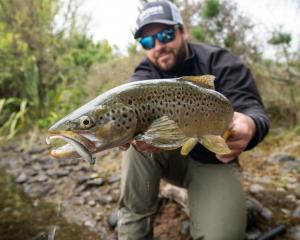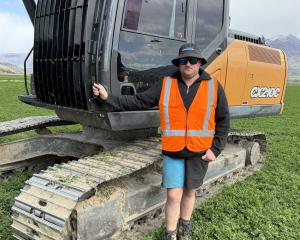Those figures were the outcome of the latest survey of the 152km trail between Clyde and Middlemarch, which about 10,000 people completed in the past 12 months.
An additional $3.6 million in gross domestic profit is also generated by the trail annually, according to the survey, which was commissioned by the Central Otago District Council.
District council business development manager Jonathan Gadd said the survey cost about $6000 and was undertaken in three stages between November and April.
Information centre staff from Ranfurly, Alexandra, and Cromwell were paid to conduct the survey on top of Seagull Hill near Wedderburn, which was the highest point on the trail and served as halfway between Clyde and Middlemarch.
Mr Gadd said the spot was chosen to survey people completing the whole trail rather than day-trippers, and it acted as a natural resting place for all trail users.
As well as highlighting benefits and attractions of the trail, the survey included suggestions for services or facilities not currently provided along the trail.
"I suspect it will be a very valuable bit of work for business operators, groups and any others involved in promoting the trail and earning an income off it," Mr Gadd said.
He said an economic impact of trail users had not previously been calculated, and while the $7 million figure was a welcome surprise, so too was information about people's experience of the tourist activity.
"It made absolutely no difference to people what time of year they did the trail, where they started from, or how long they spent doing it, in terms of how much they enjoyed it. Nor did it seem to matter how old they were or where they were from - in general, the trail was rated as a nine out of 10 experience."
Such findings meant people should get over the mindset that one time of year was better for completing the trail, Mr Gadd said.
"Nearly half of all people who do the trail complete it in March and April, so there's got to be a real benefit in getting people to come in other parts of the year," he said.
Mr Gadd will present a 50-page report on the survey to the council at its next meeting in Alexandra on June 24, when the document will become publicly available.
The survey was the first commissioned by the council on the trail, and was aimed at complementing surveys of associated business operators which were completed in 2005 and 2008 for the Otago Central Rail Trail Trust.
Trust chairwoman Daphne Hull, of Alexandra, said the survey reaffirmed trustees' confidence in what they had worked towards since forming in 1994.
"We are hearing good things about the trail all the time and this survey confirms all the money we have raised and projects we've done have been on the right track.
"You only have to look at the new businesses and purpose-built accommodation facilities along the trail to see its positive influence on the local economy," she said.
Hitting the trail
Key points from the Otago Central Rail Trail survey:
• $7.2 million is annually generated for the local economy by people completing the Otago Central Rail Trail.
• $3.6 million is annually generated in gross domestic profit.
• 75 fulltime equivalent jobs are annually created through the trail's use.
• The trail is on average rated nine out of 10 as an experience.
• 49% of trail users are from the South Island, 39% from the North Island and 12% from overseas.
• A typical user is aged about 50, is more often female, comes from Auckland, Canterbury, or somewhere else in the North Island, and starts from Clyde.
• The typical first-time rail trail user is a first-time visitor interested in historic mining towns and sites.
• Typical users also go curling and either start or finish the trail by taking the Taieri Gorge Railway.
• Typical users spend longer on the trail than younger people. A typical user spends more money than a younger person both overall and on a daily basis.
• People completing the trail often travel to Central Otago specifically to do so, and the majority have yet to experience other attractions in the district.
• People surveyed represent 6.2% of the 10,000 people who completed the trail in the past year.











